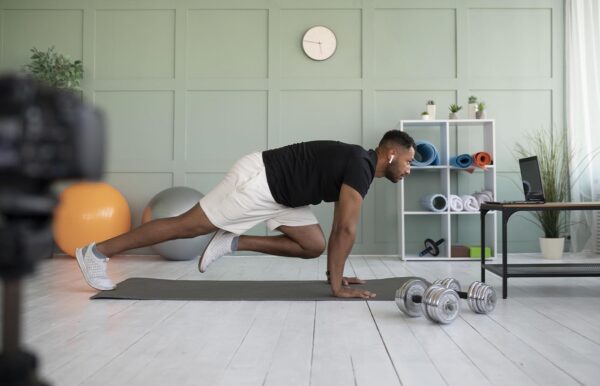
In the realm of unconventional wellness practices, the Wim Hof Breathing Method stands out as a powerful and transformative technique that has gained widespread attention. Developed by the Dutch extreme athlete Wim Hof, this breathing method combines specific breathing patterns, cold exposure, and meditation to unlock a range of physical and mental benefits. In this blog post, we’ll delve into the details of the Wim Hof Breathing Method, exploring how it works and the potential benefits it offers.
Understanding the Wim Hof Breathing Method:
At its core, the Wim Hof Breathing Method involves a series of deep, rhythmic breaths followed by a period of breath retention. The technique typically consists of three main phases:
- Breathing Exercise:
– Find a comfortable space to sit or lie down.
– Inhale deeply through the nose, filling the lungs with air.
– Exhale forcefully and completely through the mouth.
– Repeat this cycle for about 30 breaths.
- Retention Phase:
– After the final exhalation, take a deep breath in and let it out completely.
– Hold your breath for as long as you can comfortably manage.
– When you feel the urge to breathe again, take a deep breath and hold it for 15 seconds.
– Exhale and resume normal breathing.
- Cold Exposure:
– Incorporating cold exposure, such as ice baths or cold showers, is a key component of the Wim Hof Method.
– The cold exposure is believed to enhance the benefits of the breathing exercises, promoting improved circulation, reduced inflammation, and increased resilience.
How It Works:
The Wim Hof Breathing Method is based on the principles of controlled hyperventilation and conscious breath retention. The deep, rhythmic breathing helps to oxygenate the body, alkalize the blood, and activate the parasympathetic nervous system. This, in turn, can lead to a range of physiological and psychological effects, including:
- **Increased Energy Levels:**
– The enhanced oxygen intake may boost energy levels and reduce feelings of fatigue.
- Improved Immune Function:
– Wim Hof’s method has been associated with improvements in immune function, possibly due to reduced inflammation and increased production of anti-inflammatory cytokines.
- Enhanced Mental Clarity:
– Practitioners often report improved focus, concentration, and mental clarity after engaging in the breathing exercises.
- Stress Reduction:
– The method activates the parasympathetic nervous system, promoting relaxation and reducing stress levels.
- Mind-Body Connection:
– The combination of breathwork, cold exposure, and meditation fosters a stronger mind-body connection, empowering individuals to better regulate their responses to various stressors.
Conclusion:
While the Wim Hof Breathing Method has garnered considerable following and anecdotal evidence of its benefits, it’s essential to approach it with an understanding of individual variations and potential contraindications. Individuals with certain medical conditions should consult with healthcare professionals before incorporating the method into their routine.
Whether you’re seeking increased vitality, improved mental resilience, or a holistic approach to well-being, the Wim Hof Breathing Method offers a unique and accessible avenue to explore. As with any wellness practice, consistency and mindfulness are key, allowing individuals to discover the transformative potential within their own breath.

In the ever-evolving landscape of fitness, a paradigm shift is occurring—one that challenges the notion that impactful workouts are the sole path to physical prowess. Enter the realm of low-impact workouts, a trend that is not merely confined to recovery but is reshaping the way we approach fitness as a whole. In this blog post, we’ll explore the rising significance of low-impact exercises and how they are transitioning from recovery tools to primary components of holistic well-being.
Breaking Free from the Impact Myth
Traditionally, the fitness world has championed high-impact workouts for their ability to sculpt the body and elevate cardiovascular health. However, this often comes at a cost, with the potential for strain on joints and an increased risk of injury. Low-impact workouts challenge this narrative, offering an alternative that proves you don’t need to subject your body to constant pounding to achieve fitness goals.
Beyond Recovery: The Multi-Faceted Benefits
While low-impact exercises have long been associated with recovery, their benefits extend far beyond post-intensive workout care. These workouts are effective for building strength, improving flexibility, and enhancing overall fitness. From Pilates and barre to swimming and cycling, low-impact activities provide a full-body workout without the jarring impact on joints, making them sustainable for the long term.
Joint-Friendly Fitness
One of the key advantages of low-impact workouts is their gentle approach to joints. Whether you’re recovering from an injury, managing joint issues, or simply prioritizing joint health, these exercises offer a way to stay active without compromising your body’s longevity. The inclusivity of low-impact workouts makes fitness accessible to a broader demographic, fostering a more diverse and welcoming fitness community.
Mind-Body Connection: The Low-Impact Advantage
The nature of low-impact exercises allows individuals to focus on the mind-body connection without the distraction of impact-related discomfort. From the controlled movements of yoga to the rhythmic flow of aquatic exercises, these workouts provide an opportunity to cultivate mindfulness, breathing techniques, and a deeper understanding of one’s body.
The Future Fitness Landscape: A Blend of Impact and Ease
As we look towards the future of fitness, the amalgamation of high and low-impact workouts is becoming the norm. Fitness enthusiasts are recognizing the importance of balance in their routines, incorporating low-impact exercises not just for recovery but as a primary means of staying fit. The future fitness landscape is one that seamlessly integrates impactful and gentle workouts, offering a holistic approach to physical well-being.
Conclusion
Low-impact workouts are no longer confined to the sidelines of recovery—they are taking center stage in the evolution of fitness. Embracing these exercises not only safeguards joint health but also nurtures a sustainable, long-term approach to well-being. As we bid farewell to the notion that fitness success is synonymous with high impact, the rise of low-impact workouts signifies a broader understanding—that true fitness is a harmonious blend of strength, flexibility, and mindful movement. Get ready to witness the transformative power of low-impact workouts as they redefine the very essence of what it means to be fit.
